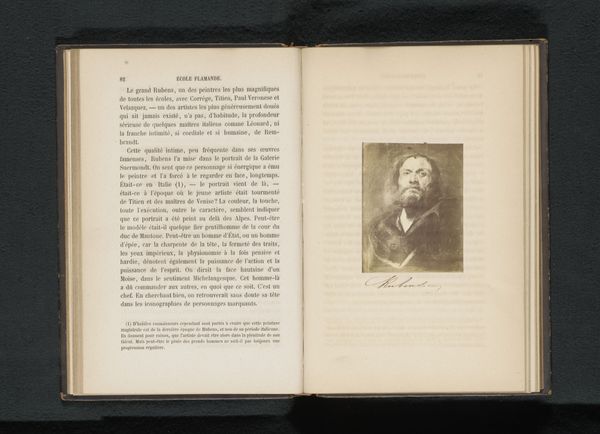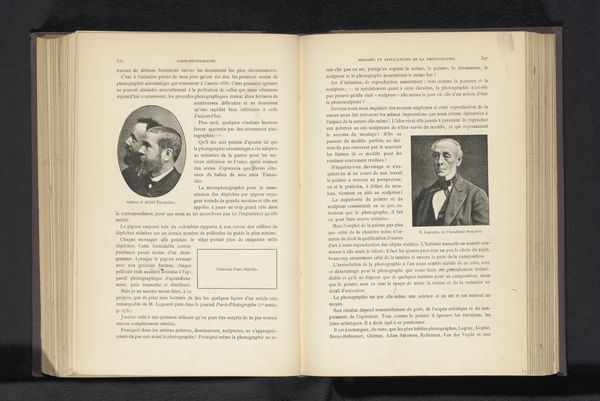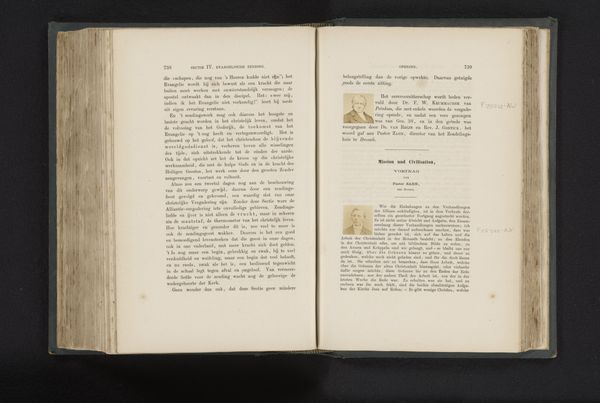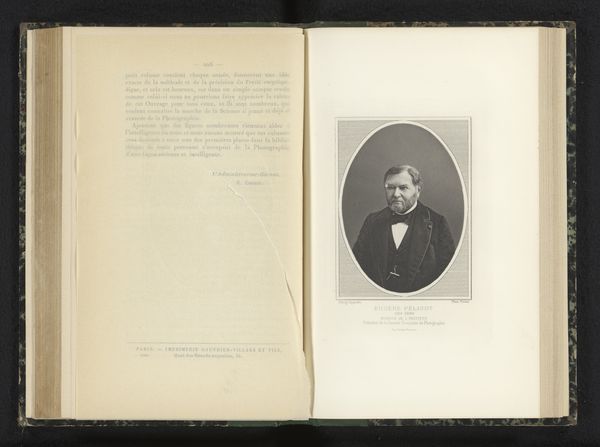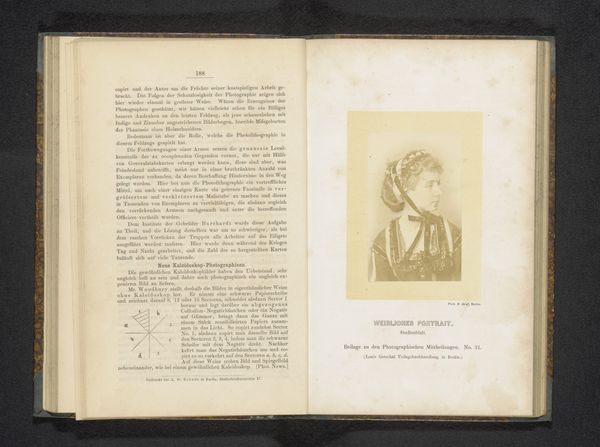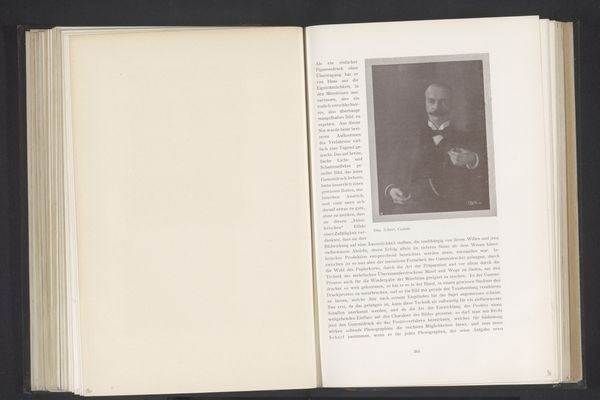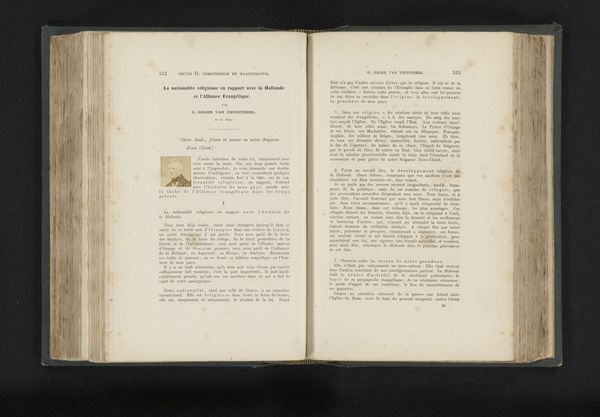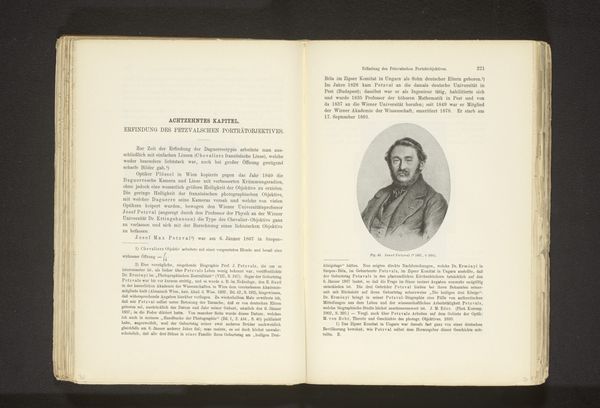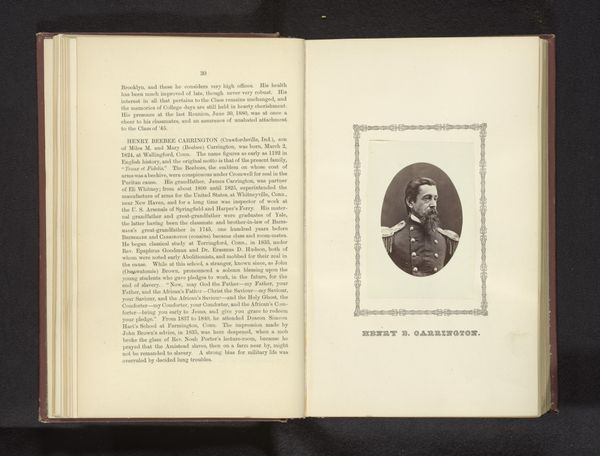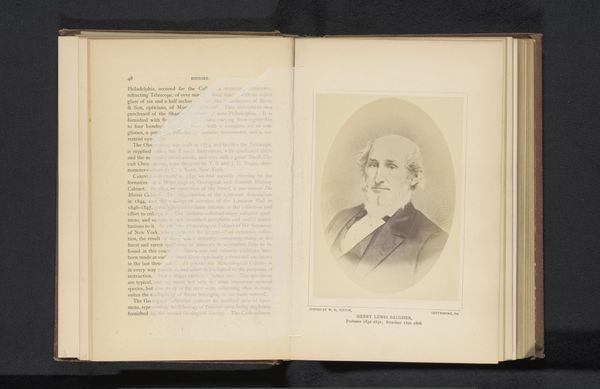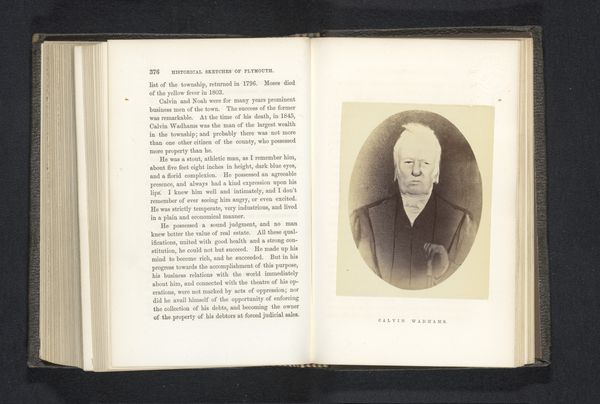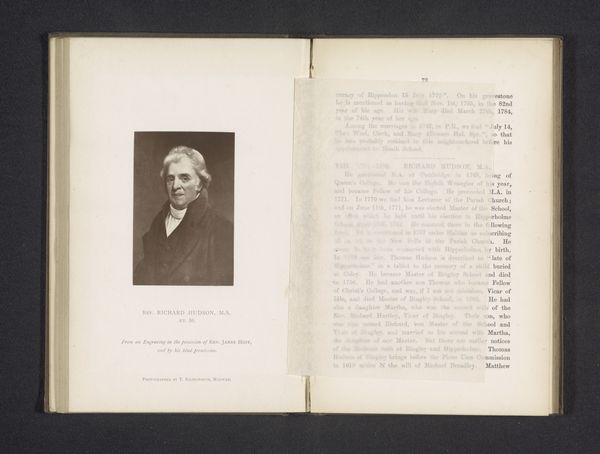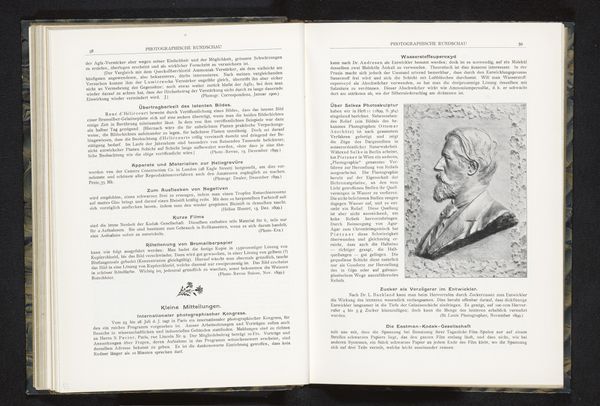
print, paper, photography, collotype
#
portrait
#
aged paper
#
paper non-digital material
#
paperlike
# print
#
typeface
#
personal journal design
#
paper
#
photography
#
collotype
#
thick font
#
script guideline
#
history-painting
#
letter paper
#
paper medium
#
historical font
Dimensions: height 83 mm, width 65 mm
Copyright: Rijks Museum: Open Domain
Curator: Before us, we have a collotype reproduction of a portrait of Ernest Mouchez by Nadar, dating back to before 1892, presently held in the collection of the Rijksmuseum. The print is embedded in the spread of an open book, a context which already piques my interest. Editor: My first impression is one of faded grandeur. The aged paper gives it a sepia-toned gravity, a whisper from the past preserved between book covers. It’s interesting how the typeface complements that antique aura. Curator: Nadar, of course, was renowned for capturing not just likeness but the essence of his sitters. The tonality is striking here, almost like an engraving, emphasizing the sculpted planes of Mouchez’s face, framed perfectly by that delicate circular vignette. Consider the careful orchestration of light and shadow. Editor: And think of the industrial processes inherent in creating such a printed reproduction. The labor in typesetting, printing, and the eventual mass distribution—it speaks to the democratization of portraiture and knowledge in that era. How many hands touched this single print, and to what end? The book is essential; it carries and disseminates the image. Curator: Absolutely. It transforms the notion of portraiture from private possession to publicly accessible artifact. The choice of collotype too, a photomechanical process, speaks volumes about the shifting relationship between artistic hand and industrial reproducibility. Editor: We are witnesses to more than just portraiture here; it is also document of production, bound to its technological and historical context. A printed page from an era hungry to document progress itself becomes history through its aged materials, a double encoding of meaning! Curator: Indeed. We find ourselves at an intersection of science, art, and historical record. There’s a compelling elegance in Nadar’s framing—the tight composition focusing our gaze on Mouchez’s intellectual presence. It suggests we are to view the Admiral as an eminent person of intellect. Editor: Agreed. And thinking materially, the survival of the print is significant. These pages are preserved, revealing to us a network of making, printing, distribution, and usage – it all brings into view the larger material culture supporting artistic endeavours of the past. Curator: Well said, looking at it with these insights offers a new understanding. Editor: It's definitely left me contemplating the layered narratives embedded within this printed portrait.
Comments
No comments
Be the first to comment and join the conversation on the ultimate creative platform.
